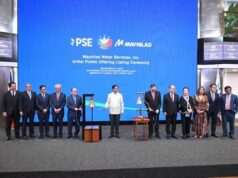Health care backup service industry cites prospects and challenges ahead
By Jenina P. Ibañez
THE HEALTH CARE information sector has tempered its targets with the rest of the information technology and business process management (IT-BPM) industry after the overall sector recalibrated its targets due to a growth slowdown in recent years.
Despite this, the subsector continues to have a higher growth rate compared to the rest of the industry, which it attributes to demand brought about by the growing aging population abroad.
The Healthcare Information Management Association of the Philippines (HIMAP) said in an e-mail that it expects 8.5-9% revenue compound annual growth rate from 2020 to 2022, below the 13% growth rate initially projected in 2016.
“We are confident of attaining these numbers due to the increased demand brought on by an aging world population and as health care becomes more digital, more collaborative, more patient-centric and more data-driven with information accessible,” HIMAP said.
Companies involved in this sector are those involved in clinical documentation services and information technology solutions development for healthcare information record processing.
The IT-BPM industry in the Philippines cut its revenue compound annual growth rate projection for 2020 to 2022 to between 3.5% and 7.5%, compared to nine percent set in 2016.
During the announcement of the recalibrated targets by Everest Group at the Information Technology and Business Process Association International Innovation Summit last week, the industry slowdown was attributed to the shift to automation, protectionist policies, geopolitical changes, and rapid transformation of business models.
HIMAP, which represents 10% of the industry, said that it is impacted by the same factors challenging IT-BPM.
But the group said that various factors “allows us to feel these impacts to a lesser degree.”
In the e-mail, HIMAP said that the global health care sector continues to grow due to increasing demand in services because of the growing senior population and number of patients with chronic diseases.
“And there is pressure to reduce cost. The US, our major market, is the biggest spender per capita on health care.”
According to US public policy organization Committee for a Responsible Federal Budget (CRFB), the US spends more on health care than any other country in the world.
CRFB said that the US spent $3.5 trillion — or 18% of its gross domestic product — on health care expenditures in 2017.
HIMAP said that the Philippines is the preferred location for health care services due to its specialized and skilled talent, and its access to the technological infrastructure necessary for the market.
HIMAP plans to work more closely with the Department of Trade and Industry to expand its markets, with the Department of Information and Communications Technology to improve its infrastructure, and with the Commission on Higher Education for a continuous supply of talent.
HIMAP also wants to develop its local services, as it plans to work with the Department of Health and Philippine Health Insurance Corp. to develop the domestic market and apply the best practices from the global market.



